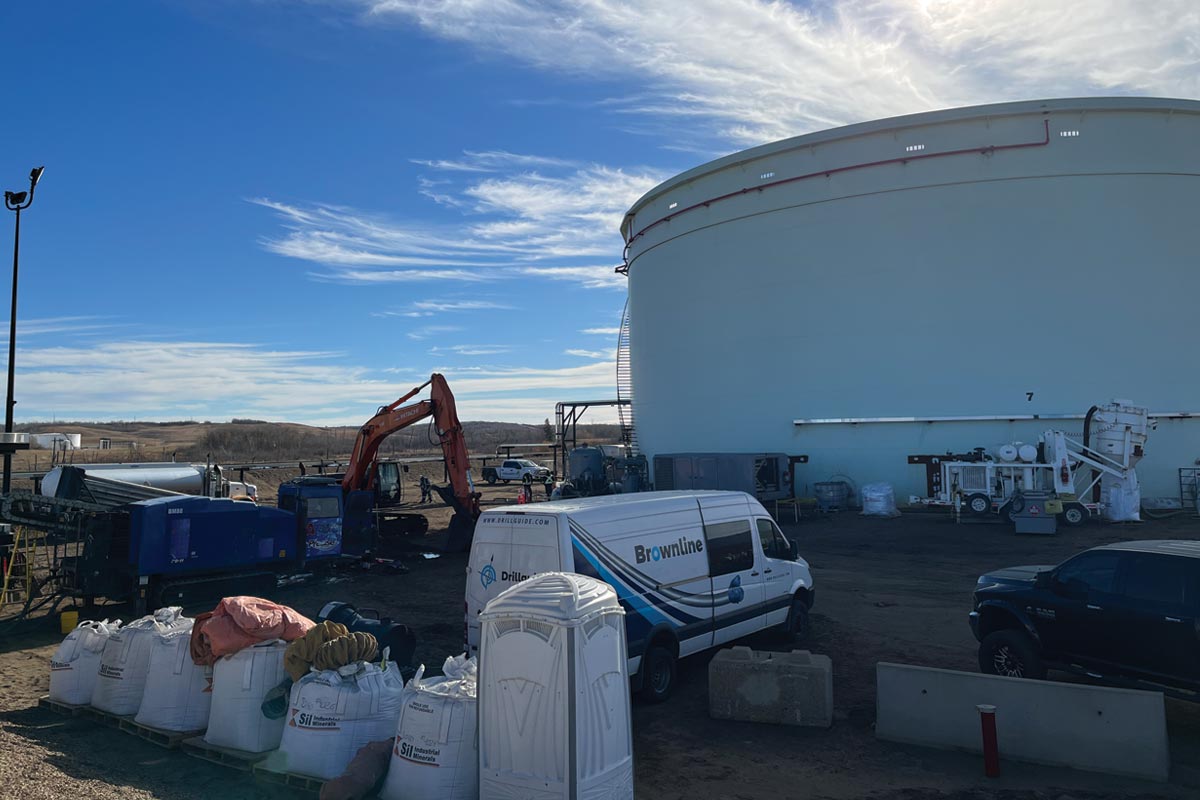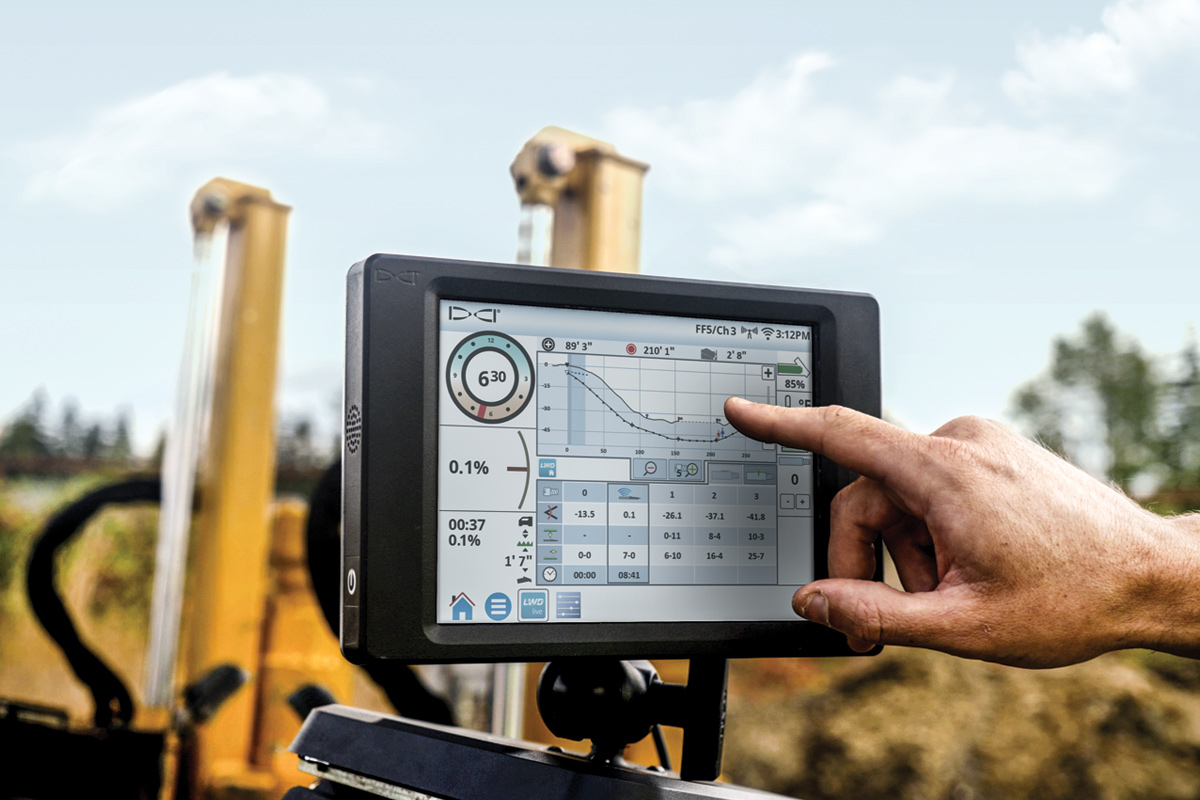
Integrating HDD, Gyroscopic Steering to Retrofit Cathodic Protection Systems
A 2023 project in Alberta highlights the integration of horizontal directional drilling and gyroscopic steering to retrofit cathodic protection systems under aboveground storage tanks.
Storage tanks are all around us. Industries, from oil and gas to agriculture, petrochemicals and water management all depend on aboveground storage tanks (ASTs) to solve the demand for space-efficient storage of valuable and often hazardous materials.
These giant tanks can reach up to hundreds of feet in diameter and provide significant storage capacity. They are usually made of metal, which is vulnerable to corrosion over time.
Corrosion poses a serious safety and operational challenge that can lead to structural failure, leaks, and environmental contamination. Aging ASTs result in billions of dollars in damages annually due to corrosion deterioration, according to a study by the Association for Materials Protection and Performance (AMPP)1.
In Canada alone, Environment and Climate Change Canada (ECCC) estimates that there are more than 10,000 ASTs in operation, with approximately 3,000 exceeding 20 years of service without adequate corrosion protection2.
Cathodic Protection Systems for Anti-corrosion
There are several anti-corrosion strategies that are taken to protect ASTs, such as applying protective coatings and lining, selecting corrosion-resistant materials, applying environmental controls and installing cathodic protection systems in the vicinity of the tank.
In the early 19th century, the concept of cathodic protection was first used as an anti-corrosion measure for ships in the British Navy3. In the late 19th and early 20th century, this expanded to control corrosion on metal structures such as buried pipelines and steel storage tanks.
Cathodic protection is an electrochemical process that works by converting the metal surface of the structure into a cathode which shields the metal structure from oxidation (i.e., corrosion). Oxidation leads to metal deterioration by loss of electrons.
External anodes are added to complete the electrochemical reaction and protect the metal structure from corrosion. The anodes are made of more reactive metals and referred to as sacrificial anodes in galvanic cathodic protection systems. The anodes corrode instead of the protected metal structure, providing electrons to the metal structure and ensuring it continues to act as the cathode and remains protected from oxidation.

Applications of Cathodic Protection in ASTs
The cathodic protection concept is applied to ASTs. For a new AST, cathodic protection is installed by laying anode strips under the tank bottom and burying them in a sand cushion to avoid exposure. Wires from these anodes are routed through a concrete ring beam built around the tank and connected to a DC power supply unit.
Once the tank is fully constructed, a welded connection to the tank is linked to a transformer rectifier unit. This establishes an electrochemical environment necessary for cathodic protection. Cathodic protection systems for ASTs are further detailed in standards provided by NACE International (2016)4.
For an existing AST that requires cathodic protection retrofitting due to outdated anti-corrosion systems, more challenges arise from space confinement. Moreover, this process involves excavation around and under a tank, which requires halting tank operations for weeks to replace a failing cathodic protection system. With 30 percent of storage tanks needing cathodic protection retrofitting in Canada, an innovative and less disruptive process is necessary.
HDD: A Modern, Innovative Solution
The use of horizontal directional drilling (HDD) is a great candidate to install cathodic protection systems under an existing AST.
To retrofit ASTs with a uniform array of parallel anodes directly beneath the tank floor, precise placement of the tubes is required. Exact separation between each anode tube must be guaranteed to enable uniform current distribution across the tank floor.
HDD’s ability to achieve accurate bore trajectories is key. This is where guidance and locating systems come into play. Drilling under a steel oil storage tank, for example, is a sensitive and high-stakes environment with no room for error.
The chief obstacle to HDD guidance tools is the magnetic interference caused by the steel tank itself. This leaves gyroscopes as the sole guidance system capable of completing the job successfully while adhering to the strict design specifications of the anode array under the tank.
The gyroscope operates independently of an external magnetic field and is therefore unaffected by the steel tank. It makes it possible to maintain precise orientation of the drill head along the designed trajectory.
Case Study: Retrofitting an AST in Alberta
In October 2023, the retrofitting of the cathodic protection system under a 120-ft-wide AST at an oil terminal in Alberta demonstrated the successful integration of HDD and gyroscopic steering.
Measurements and testing of the existing 10-year-old cathodic protection system around the perimeter of the tank showed 30 to 50 percent lower cathodic protection current coverage than required, indicating the need to replace the cathodic protection system. Instead of designing the anodes in a ring pattern around the perimeter of the tank, an array of anodes in a linear pattern traversing the bottom of the tank was used to ensure adequate electrical current was supplied to the tank floor.
A total of 10 parallel strings of anodes at 6-ft depth with a maximum allowable deviation of 20 in. were designed and spaced apart at 11 ft. A 3-in. PVC tube was installed tangentially, 1.5 ft above the anodes for the purpose of monitoring the cathodic protection system.
Using Brownline’s Drillguide Gyro Steering Tool and an American Augers DD-110 HDD drill rig, the project successfully installed the anode bores and PVC tube.
Conclusion
This project demonstrated the viability of a novel and transformational method of retrofitting cathodic protection systems under ASTs using HDD and gyroscopic steering. The combination of precision, efficiency, and minimal disruption creates a modern solution to address the longstanding challenges of corrosion management.
Beyond the immediate success of the project, this approach offers a blueprint for the industry to adopt safer, more cost-effective, and environmentally responsible methods for preserving critical storage infrastructure.
By ensuring the longevity of these assets and advancing the field of corrosion mitigation, this innovation advances the responsible and efficient management of essential resources in the 21st century.
Mohammed Alwazir is a project manager at Brownline Canada.
FOOTNOTES:
- Association for Materials Protection and Performance. (2021, June 17). Corrosion study reveals $63 billion annual cost to Canada. Retrieved December 13, 2024, from https://www.ampp.org/blogs/webmasternaceorg/2021/06/17/corrosion-study-reveals-63-billion-annual-cost-to ↩︎
- Canadian Petroleum Contractors’ Association. (n.d.). Environment Canada. Retrieved December 13, 2024, from https://cpcaonline.com/resources/regulations/environment-canada/ ↩︎
- Davy, H. (1824). On the application of electrochemical principles to the preservation of the copper sheathing of ships and to other purposes. Philosophical Transactions of the Royal Society of London, 114, 151–158. ↩︎
- NACE International. (2016). External Cathodic Protection of On-Grade Carbon Steel Storage Tank Bottoms. NACE SP0193-2016 ↩︎




